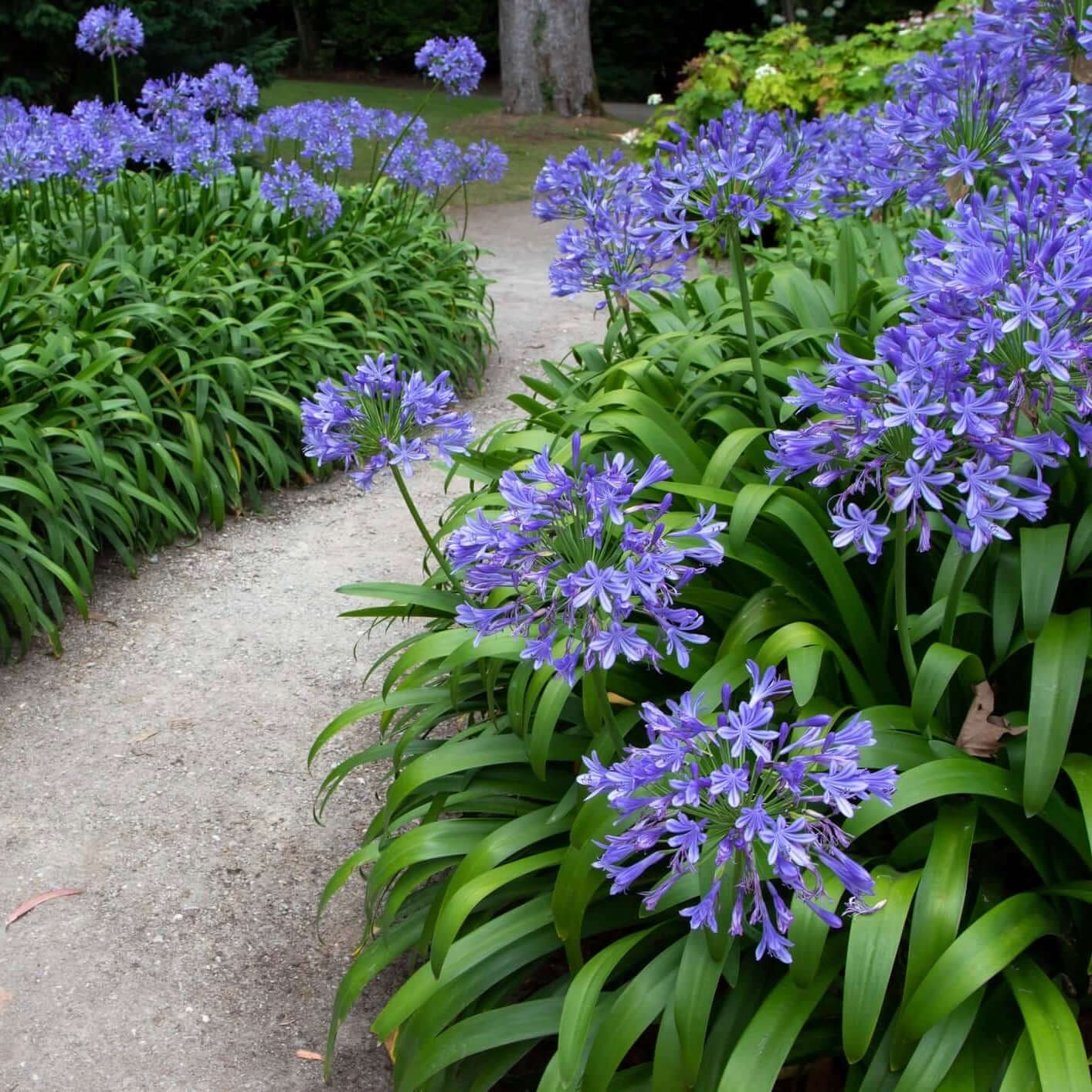Agapanthus Treatment Tips for Lush and Vibrant Flowers
Agapanthus Treatment Tips for Lush and Vibrant Flowers
Blog Article
Mastering the Art of Agapanthus Care: Essential Steps for Healthy And Balanced Development and Vivid Blossoms
In the world of gardening, the cultivation of agapanthus stands as a rewarding endeavor for those who seek to support these sophisticated flowering plants. From choosing the appropriate selection to mastering pruning methods, the trip towards cultivating prospering agapanthus plants is diverse and holds the essential to opening the complete possibility of these herb gems.

Picking the Right Agapanthus Variety

When picking the appropriate Agapanthus variety for your yard, consider aspects such as climate viability, flower color, and development habit. Agapanthus, typically recognized as Lily of the Nile or African lily, can be found in a range of colors varying from shades of purple and blue to white. Select a blossom color that enhances your existing yard combination to produce an unified landscape. Furthermore, consider the climate in your area to make sure the Agapanthus variety you select can flourish in your certain problems. Some selections are extra forgiving of chilly temperature levels, while others favor warmer environments. Recognizing the development practice of different Agapanthus selections is essential for proper positioning within your yard. Some varieties have a clumping growth practice, perfect for borders or containers, while others have an even more spreading nature, ideal for ground cover or mass growings. By very carefully reviewing these elements, you can choose the excellent Agapanthus range to boost the beauty of your yard.
Ideal Planting Conditions
Thinking about the ideal ecological needs is crucial for effective Agapanthus farming. Agapanthus plants are delicate to cold temperatures and should be secured from frost during wintertime months.
To guarantee healthy and balanced growth and dynamic blooms, plant Agapanthus light bulbs at a deepness of about 2-4 inches and room them 8-12 inches apart. Including raw material, such as garden compost, to the dirt can boost drainage and fertility, advertising durable root development. Mulching around the base of the plants aids preserve wetness and suppresses weed growth. Routine watering is crucial, especially throughout the expanding season, to maintain the dirt continually wet however not saturated.
Watering and Fertilizing Tips
Preserving appropriate dampness degrees and supplying important nutrients are key aspects in the treatment routine for Agapanthus plants. It is important to strike a balance when it comes to sprinkling Agapanthus. These plants favor consistently moist dirt yet are at risk to root rot if overwatered. Throughout the growing season, water deeply once a week, making sure the dirt is well-draining to avoid waterlogging. In hotter environments or during periods of dry spell, more regular watering might be required to maintain the dirt uniformly damp. Nonetheless, minimize watering in the winter months to prevent water logged conditions.
Feeding Agapanthus is crucial for advertising healthy and balanced growth and respected flowers. Use a well balanced fertilizer, such as a 10-10-10 formula, in the early spring as new growth arises. Repeat this application every 6-8 weeks throughout the expanding period. Prevent extreme fertilizing, as it can lead to rich vegetation at the expenditure of blooms. Always follow the maker's directions for appropriate dilution and application approaches. By complying with these watering and feeding suggestions, you can ensure your Agapanthus plants prosper and create lively, resilient blooms.
Trimming Methods for Agapanthus
Pruning Agapanthus plants at the appropriate times and with appropriate methods is crucial for maintaining their wellness and promoting optimum development and blooming. The optimal time to prune Agapanthus is in late winter or very early spring prior to brand-new development arises.
For flowered stems, wait till the blooms have perished and then cut them back to the base. This not only cleans the plant's look yet additionally look at these guys motivates the growth of brand-new flower buds. Deadheading spent blossoms can additionally redirect the plant's energy into producing even more flowers instead of establishing seeds. Nonetheless, if you intend to gather seeds for breeding, leave some blossoms to fully grown and dry on the plant.
Remember to use tidy, sharp tools to make accurate cuts and lower the danger of presenting conditions. Agapanthus. Routine trimming will assist keep your Agapanthus looking healthy and balanced and neat while ensuring an abundant display screen of lovely blooms
Managing Usual Parasites and Illness
After guaranteeing proper trimming techniques for Agapanthus, it is necessary to resolve usual parasites and conditions that can affect the health and vitality of these plants. One usual parasite that impacts Agapanthus is the Agapanthus gall midge.
Additionally, Agapanthus plants can suffer from origin rot if they are grown in badly draining dirt. By being cautious and taking punctual action against diseases and parasites, you can click for source assist your Agapanthus plants thrive and produce lively blooms. Agapanthus.

Verdict
In conclusion, grasping the art of agapanthus treatment involves click resources picking the best variety, providing optimal planting conditions, proper watering and feeding, ideal pruning methods, and dealing with typical insects and diseases. By following these vital steps, you can ensure healthy and balanced development and vivid blooms for your agapanthus plants. Remember to routinely monitor and preserve your plants to promote their general wellness and durability.
To guarantee healthy growth and dynamic blossoms, plant Agapanthus light bulbs at a deepness of concerning 2-4 inches and room them 8-12 inches apart. By complying with these watering and feeding suggestions, you can guarantee your Agapanthus plants thrive and produce lively, long-lasting blooms.
One typical parasite that impacts Agapanthus is the Agapanthus gall midget. Furthermore, Agapanthus plants can experience from root rot if they are grown in badly draining pipes soil. By adhering to these necessary steps, you can make certain healthy and balanced growth and dynamic flowers for your agapanthus plants.
Report this page